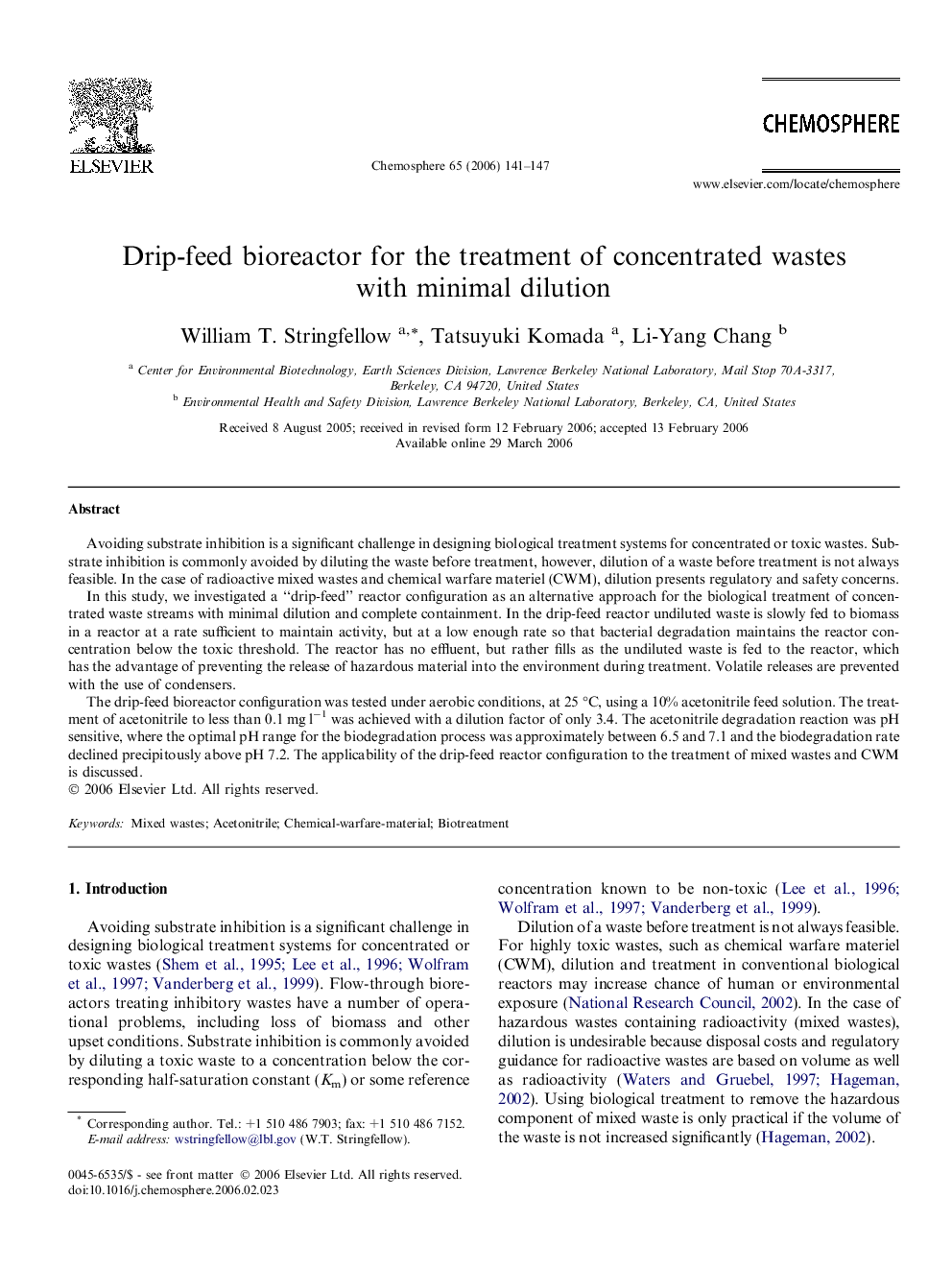| Article ID | Journal | Published Year | Pages | File Type |
|---|---|---|---|---|
| 4415804 | Chemosphere | 2006 | 7 Pages |
Avoiding substrate inhibition is a significant challenge in designing biological treatment systems for concentrated or toxic wastes. Substrate inhibition is commonly avoided by diluting the waste before treatment, however, dilution of a waste before treatment is not always feasible. In the case of radioactive mixed wastes and chemical warfare materiel (CWM), dilution presents regulatory and safety concerns.In this study, we investigated a “drip-feed” reactor configuration as an alternative approach for the biological treatment of concentrated waste streams with minimal dilution and complete containment. In the drip-feed reactor undiluted waste is slowly fed to biomass in a reactor at a rate sufficient to maintain activity, but at a low enough rate so that bacterial degradation maintains the reactor concentration below the toxic threshold. The reactor has no effluent, but rather fills as the undiluted waste is fed to the reactor, which has the advantage of preventing the release of hazardous material into the environment during treatment. Volatile releases are prevented with the use of condensers.The drip-feed bioreactor configuration was tested under aerobic conditions, at 25 °C, using a 10% acetonitrile feed solution. The treatment of acetonitrile to less than 0.1 mg l−1 was achieved with a dilution factor of only 3.4. The acetonitrile degradation reaction was pH sensitive, where the optimal pH range for the biodegradation process was approximately between 6.5 and 7.1 and the biodegradation rate declined precipitously above pH 7.2. The applicability of the drip-feed reactor configuration to the treatment of mixed wastes and CWM is discussed.
